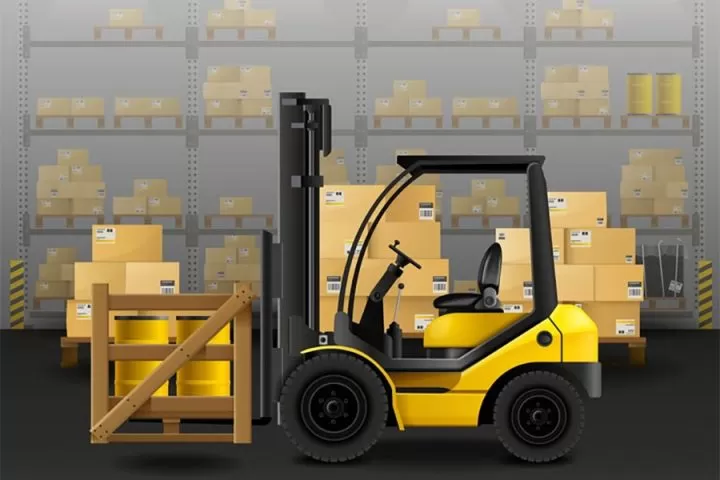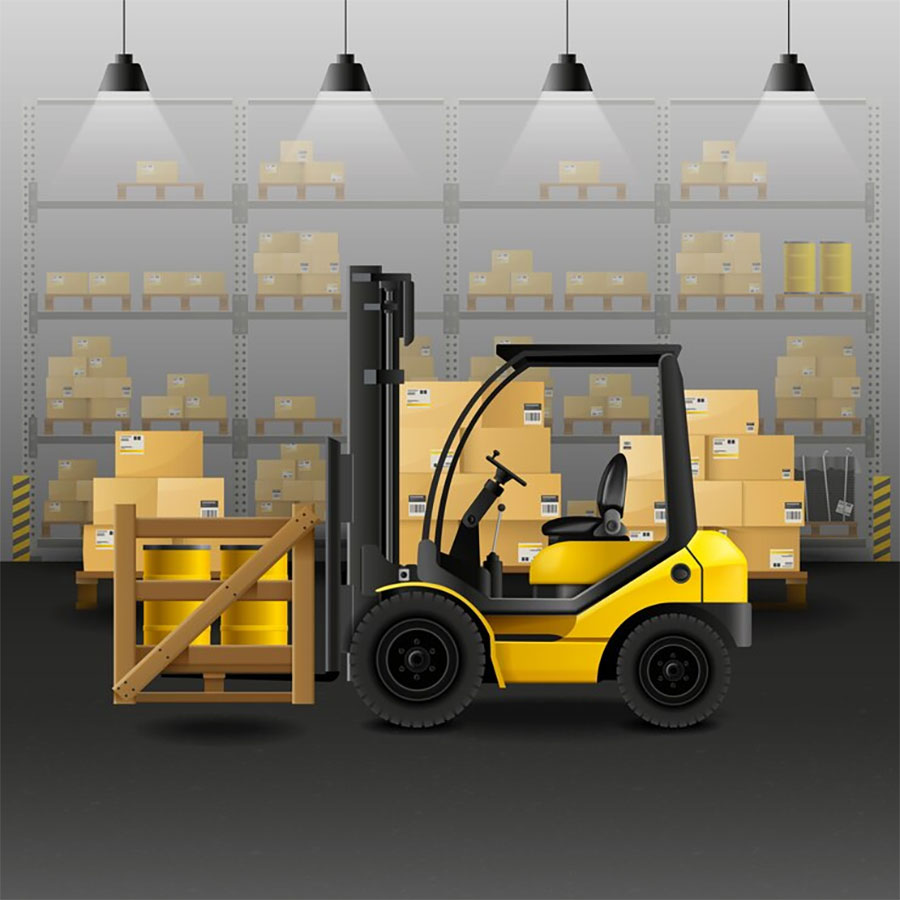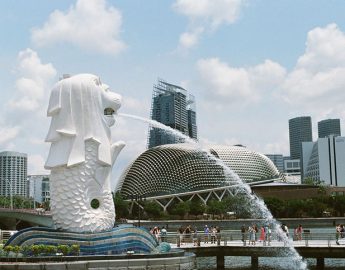Forklifts are essential equipment for many industries. However, they also represent a significant investment and not every company requires one on a permanent basis. You might be handling a short-term project or experiencing seasonal spikes in demand. In these and similar cases, renting offers the flexibility and financial benefits that many businesses find appealing. Indeed, a forklift rental can be a practical and cost-effective solution for businesses that need to meet temporary obligations, manage fluctuating workloads, or simply avoid the ongoing costs associated with forklift ownership.
That said, the convenience of renting comes with the responsibility of making an informed choice. This will help you ensure smooth, safe operations, as well as avoid inefficiencies and unexpected costs. As such, it is essential to carefully evaluate your options before committing to a particular forklift rental. The more you know about what you specifically need and what to look for, the better-positioned you’ll be to make a decision that supports your business goals.
Here are a few key factors you should consider when renting a forklift for your business:
Lifting Capabilities
Every business has unique lifting requirements and not all forklifts are built to handle the same tasks. A forklift’s capacity to carry and move materials varies significantly across models, so you’ll need to match the machine’s capabilities to the demands of your operation. Consider the heaviest load your business handles regularly and the maximum height at which you need to lift these loads. If the forklift is underpowered for the job, it can strain the equipment and endanger your workforce, leading to costly delays and accidents.
It’s also worth considering the physical dimensions of the materials you intend to move. When dealing with materials that are bulky, irregularly shaped, or particularly large, standard forklifts might not always be up to the task. In such cases, specialised forklifts, like side loaders or multi-directional forklifts, can be invaluable. As their name implies, side loaders are designed to pick up and transport items from the side of the machine. They are ideal for long loads like pipes, timber, or metal rods. Meanwhile, multi-directional forklifts can move in any direction—forward, backward, or sideways—without needing to turn. This capability is especially beneficial when navigating narrow spaces or transporting wide or awkwardly shaped loads.
Fuel Type
The type of fuel that a forklift uses has a direct impact on its performance, operational costs, and suitability for different environments. For indoor use where ventilation might be a concern, the best choice are electric forklifts. They run quietly, produce no emissions and have lower operating costs in terms of energy consumption. However, they require regular charging and might not be suitable for long shifts without a break for recharging. This makes them less ideal for continuous, heavy-duty outdoor operations that require you to minimise downtime.
On the other hand, diesel and propane forklifts are better suited for outdoor environments. In particular, diesel forklifts are known for their power and endurance, so they’re perfect for heavy lifting in rough terrains. They can handle long hours of use without the need for frequent refuelling, which is advantageous in demanding outdoor settings. Meanwhile, propane forklifts offer a middle ground. They are usable both indoors and outdoors, provided that there is proper ventilation. They also have a lower environmental impact compared to diesel but still deliver sufficient power for a range of tasks.
Operating Environment
The environment in which your forklift will operate plays a critical role in determining the right type of equipment to rent for your needs. Indoor environments, such as warehouses or distribution centres, typically have smooth, flat surfaces, and may require manoeuvring through narrow aisles or around tight corners. In such settings, a compact, agile forklift with a smaller turning radius is ideal. In addition, forklifts used indoors must comply with emission standards. This makes electric models a popular choice due to their zero emissions and quieter operation.
Conversely, outdoor environments present different challenges that necessitate more robust equipment. If your forklift will be used on uneven or rough terrain, such as at construction sites or in lumberyards, you’ll need a model that can handle these conditions without compromising stability or performance. Forklifts designed for outdoor use often have larger tyres with better traction and more powerful engines, enabling them to navigate challenging surfaces and perform heavy lifting tasks with ease.
Safety Features
When renting a forklift, safety should always be a top priority. Ensure that the equipment has up-to-date safety features to reduce the risk of accidents and injuries. Fortunately, many modern forklifts often come with a variety of safety enhancements, such as backup alarms, safety lights, and advanced stability controls, which help operators navigate busy or confined spaces with greater ease. These features are particularly important in environments where forklifts operate in close proximity to workers or other machinery.
You should also verify that the forklift you intend to rent complies with all relevant safety regulations and standards. A reputable rental company must provide documentation on the equipment’s safety certifications and maintenance history; this confirms that it is in optimal condition for use. Some rental companies also offer training services to ensure that your staff is fully up to speed on best practices for operating your chosen forklift. Even if your operators are experienced, refresher training can be beneficial, particularly when using unfamiliar equipment.
In just about any industry, the right equipment is more than just a tool—it’s an investment in your business’s future. Your choice of forklift rental can make a major impact on your business’s productivity, safety, and overall success. Consider your needs and the above factors carefully to make the most informed decision possible in support of your operational goals.






















 10 Best Maid Agencies in Singapore for an Easy Helper Find
10 Best Maid Agencies in Singapore for an Easy Helper Find  The 7 Most Romantic Restaurants in Singapore
The 7 Most Romantic Restaurants in Singapore  5 Best Sofa Cleaning Services in Singapore
5 Best Sofa Cleaning Services in Singapore  10 Best Aircon Services in Singapore
10 Best Aircon Services in Singapore  10 Best House Movers in Singapore
10 Best House Movers in Singapore  10 Best House Cleaning Services in Singapore
10 Best House Cleaning Services in Singapore  Illuminate Spring with Blooms across Lendlease malls
Illuminate Spring with Blooms across Lendlease malls  2XU Compression Run 2025 Singapore
2XU Compression Run 2025 Singapore  Solo Travel and Mental Health: Discovering Wellness Through Independence and Adventure
Solo Travel and Mental Health: Discovering Wellness Through Independence and Adventure  5 Ways to Improve Your Business’s Energy Efficiency
5 Ways to Improve Your Business’s Energy Efficiency  7 Types of Smart Road Solutions That Help Improve Traffic Efficiency and Safety
7 Types of Smart Road Solutions That Help Improve Traffic Efficiency and Safety  The 5 Best Homemade Ice Cream in Singapore
The 5 Best Homemade Ice Cream in Singapore  7 Best Brunches in Singapore with Delicious Champagne
7 Best Brunches in Singapore with Delicious Champagne  5 Best Vegetarian Restaurants in Singapore: Finest Food
5 Best Vegetarian Restaurants in Singapore: Finest Food  5 Best Exciting Activities to Enjoy in Singapore
5 Best Exciting Activities to Enjoy in Singapore  Top Weekend Getaway Options From Singapore
Top Weekend Getaway Options From Singapore  7 Best Bowling Centres in Singapore to Knock down Some Pins
7 Best Bowling Centres in Singapore to Knock down Some Pins